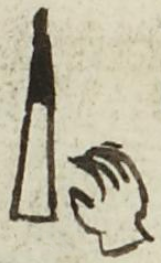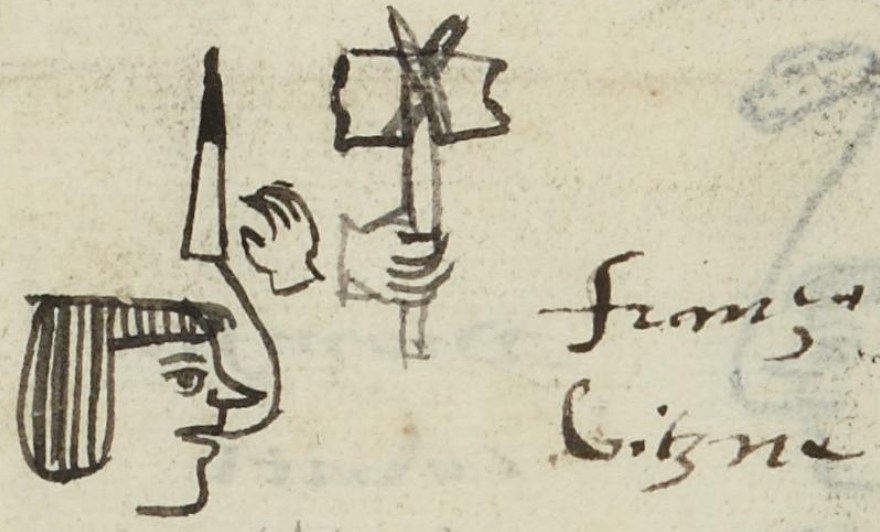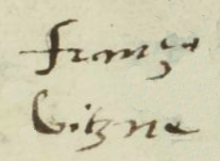Huitzne (MH628v)
This black-line drawing of the compound glyph for the personal name Huitzne is attested here as a man's name. Further research is required for a good translation. The start of the name comes from the word for thorn (huitztli). The -ne could be indicated by the hand that appears to the right of the thorn, but how it is translated is unclear as yet. The thorn in the glyph is dark at the top and white at the bottom. Perhaps the dark color is a reference to blood, given that it is red in some other glyphs, and the thorn was used for bloodletting, a religious ritual of self-sacrifice.
Stephanie Wood
Perhaps this is an apocopated version of the name Huitznecahual, a famous lord. (See the dictionary link.) Or perhaps the gloss has an inadvertently dropped "n," and the name should be Huitznen. But the interpretation of Huitznen is also elusive.
The lack of an "o" at the end of Francisco must be an error on the part of the tlacuilo.
Stephanie Wood
franca,
vitzne
1560
Jeff Haskett-Wood
thorns, spines, espinas, sacrifice, sacrificio, hands, manos, nombres famosos, nombres de hombres

huitz(tli), thorn, https://nahuatl.wired-humanities.org/content/huitztli
Huitznecahual, this was the name of a known Chalcan lord, https://nahuatl.wired-humanities.org/content/huitznecahual
Espina-Yo
Stephanie Wood
Matrícula de Huexotzinco, folio 628v, World Digital Library, https://www.loc.gov/resource/gdcwdl.wdl_15282/?sp=339&st=image.
This manuscript is hosted by the Library of Congress and the World Digital Library; used here with the Creative Commons, “Attribution-NonCommercial-ShareAlike 3.0 License” (CC-BY-NC-SAq 3.0).





